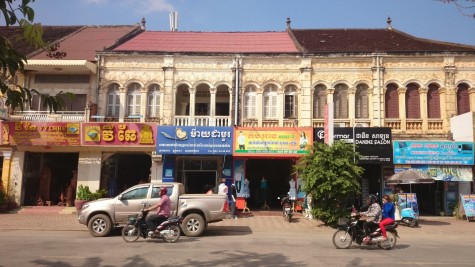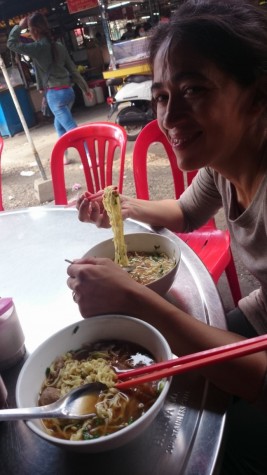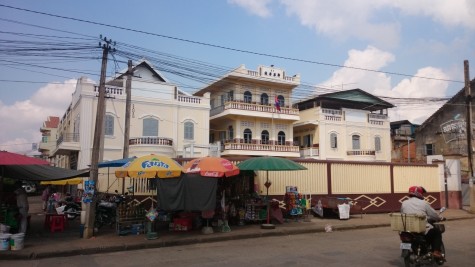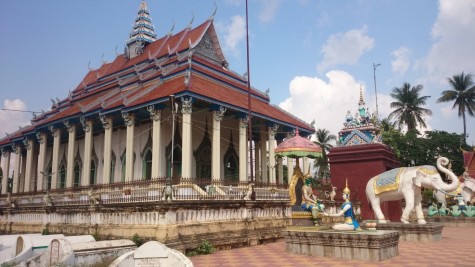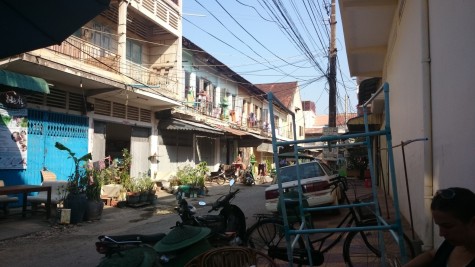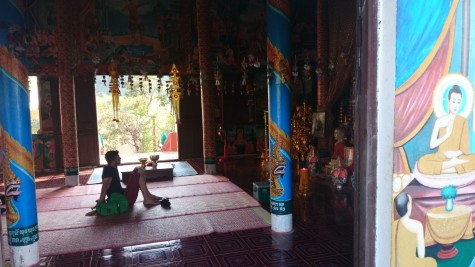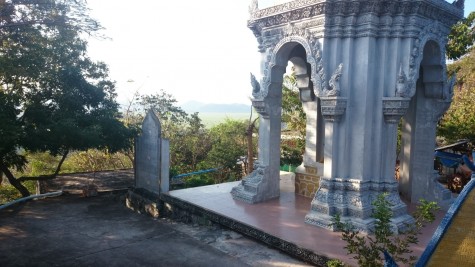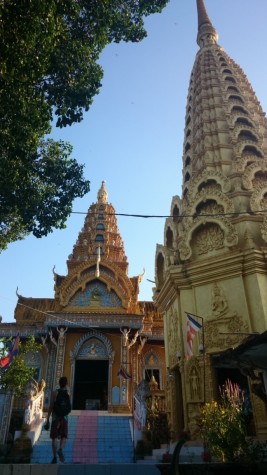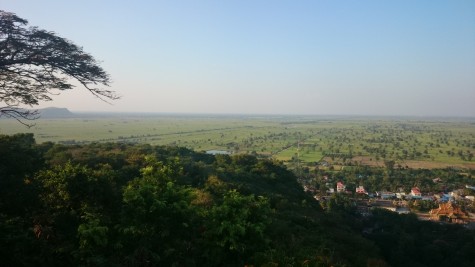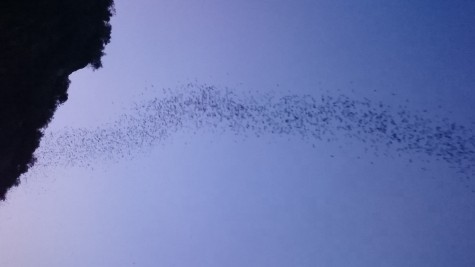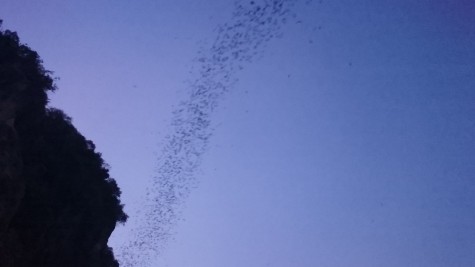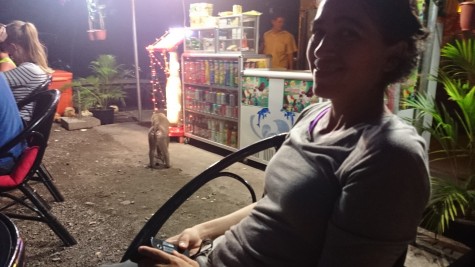Sara told us to head to the market for a noodles breakfast. Sounded good. We sauntered up to the first noodles stand we saw and, before we could order, the woman behind the table started spewing Mandarin at me. That was convenient. There’s a small Chinese population in Cambodia, but I was told that some local Khmer have also picked up Chinese due to the rising importance of the language.
Cindy found a Battambang heritage walk online. It highlights some of the more interesting architectural points of the city. Cindy and I kept looking for the remnants of French colonial architecture without success, until we looked up. The old French buildings are still obvious at the upper floors, but the lower floors have been turned entirely into open store fronts (above). It’s an interesting visualization of how Asians appropriate a European structure.
With only one full day in Battambang, we selected only a handful of touristy activities we wanted to do. Our choices were the Killing Cave and the bat cave, both conveniently located next to each other. The Killing Cave is a somber reminder of Cambodia’s recent history. Like the more famous Killing Fields, the Khmer Rouge would bring undesirables to a cave near Battambang, kill them at the rim of the cave, and then shove the bodies into the cave. Thousands of Cambodians died in this manner.
Now, a Buddhist shrine is in the cave and houses the skulls and bones of some of the deceased. Both Buddhist and Hindu temples can be found higher on the mountain. Cindy and I paid our respects at the cave and then climbed to the top of the mountain to visit the temples and admire the view.
The bat cave is at the base of the mountain. Every day, millions upon millions of bats fly out at sunset and return before sunrise. This seemingly insignificant routine has become quite popular with tourists. I was a little bit skeptical but was sold once I saw the bats fly out. It takes almost an hour for all of them to completely leave the cave. They form a seemingly endless black stream over the entire countryside as they leave. Some curious tuk tuk drivers have discovered that they can momentarily change the pattern of the bats’ flight by yelping at certain pitches.
While watching the bats, we asked our tuk tuk driver about his experiences during Khmer Rouge. He was unique amongst our tuk tuk drivers in that he was a little bit older, 45 to be exact. The effects of Khmer Rouge can be seen very strikingly in the population structure of Cambodia. Only 4% of the country is over the age of 65. From that group, the male-to-female ratio is 0.6. The respective figures in the USA are 15% and 0.8.
Our driver was five in 1975, when the Khmer Rouge evacuated Phnom Penh. His parents were soldiers and later died. The rest of his family was sent to agricultural camps in the countryside. He himself was raised by a foster family, with whom he stayed/worked during Khmer Rouge. His grandparents managed to escape to the United States. After the Khmer Rouge were driven out, he moved back to Battambang, where he still has an uncle.

 Español
Español